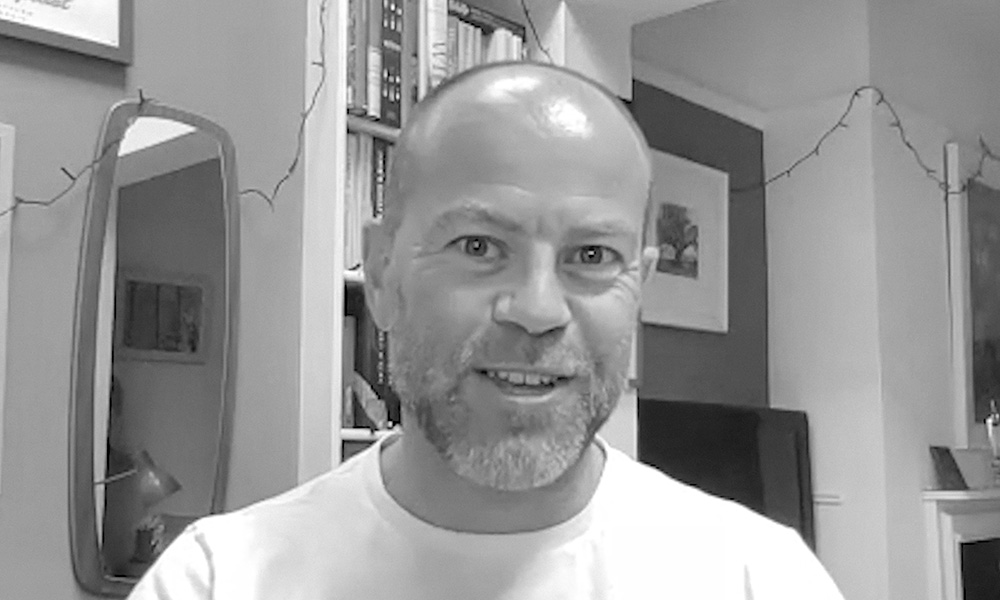
Photograph: Efe Kurnaz/Unsplash
Koldo Saratxaga — sage, business pioneer and founder of K2K Emocionando in Bilbao, the Basque region of northern Spain — has a message about detailed plans: they offer false comfort and no more than the notion of control.
Detailed planning may have been standard practice 100 years ago, Saratxaga told us while researching our book Corporate Rebels: Making Work More Fun. But he added: “In our modern world, they are far from ideal.”
He’s right. We no longer live in an era in which identical Model Ts roll off Henry Ford’s production line, and it has become no easier to predict what the next year will bring. As the Greek philosopher, Heraclitus observed some 2,500 years ago: “The only constant in life is change.”
He was right, too — our world is very different to that of just a few decades ago. And in many respects, fundamental change has been recent.
Organisations have become more complex, and things have been made worse by unnecessary bureaucracy. Many companies and individuals fall into this trap.
Organisations have become more complex, and things have been made worse by unnecessary bureaucracy. Many companies and individuals fall into this trap — and the one of trying to predict the future to wrest control from the chaos. Command-and-control is still the way to go, some people believe.
Spoiler alert: it’s not.
Prediction is hopeless
Carlos Gershenson, editor-in-chief of Complexity Digest and member of the Board of Advisers at Scientific American, has a firm view on predictability. “Science and engineering have assumed that the world is predictable,” he said, “and that we just need to find the proper laws of nature to be able to foresee the future. But the study of complex systems has shown this is misguided.”
Gershenson studies complex systems in urban mobility: traffic jams, metro systems, pedestrian walkways. The many interactions between pedestrians, cars, buses, trains and bicycles in these systems condemn them to be complex. “The problem,” he points out, “may be that most engineers are taught traditional methods based on predicting what is to be controlled, and they try to improve on those methods. But for complex systems, prediction is almost hopeless. The moment you achieve optimality, the problem changes. The solution is obsolete already.”
Adaptation beats optimisation
Instead of trying to optimise systems that can’t be optimised, complexity scientists look to adaptation. Gershenson’s research provides accessible examples.
“Traffic-light systems,” he notes, “are normally timed and programmed in a way that’s supposed to be efficient, but the precise number of cars stopped by each traffic light varies constantly. Even if you’re basing it on a traffic measurement that it’s around 13 cars per minute on average, one minute there will be 20, and another there will be zero, and another there will be six.”
Co-ordinating programmed traffic lights to keep traffic flowing is a tough one. It gets more demanding the more intersections there are to be coordinated — and the picture is constantly changing. Attempts at prediction are futile. “Since optimisation is so computationally demanding, you need to use adaptation,” says Gershenson.“Self-organising traffic lights have sensors that let them respond to traffic by modifying the timing of the signals. They are not trying to predict, they are constantly adapting to the changing traffic flow. But if you can adapt to the precise demand, then there is no idling.”
The only reason for cars to be stationary is because other cars are crossing. “The traffic light tells the cars what to do. But because of the sensors, the cars tell the traffic lights what to do, too.”
Swarm intelligence
That shows the potential of adaptability in complex systems. In the pioneering organisations that we have researched over the years, we’ve seen similar approaches. Pioneering companies – such as Irizar, Haier and Morning Star – have created their own complex adaptive systems. So have service providers such as Centigo, Nearsoft, Buurtzorg and Vagas.
What they do is recreate a natural phenomenon first observed in ant colonies.
Tom Connor, commenting recently on the work of Eric Bonabeau and Christopher Meyer (Harvard Business Review, 2001), observed: “Social insects work without supervision.”
Bonabeau and Meyer note that insect teamwork is largely self-organised, and coordination comes from interactions between individuals in the colony.
“Although these interactions might be primitive – one ant merely following the trail left by another, for instance – taken together they result in efficient solutions to difficult problems, such as finding the shortest route to a food source among myriad possible paths,” say Bonabeau and Meyer. “The collective behaviour that emerges from a group of social insects has been dubbed ‘swarm intelligence’.”
It’s something displayed by flocking birds, hunting hawks, schooling fish and even growing bacteria. Connor has identified some of the common characteristics.
Flexibility: the organisation can adapt to a changing environment.
Robustness: the group can perform even when one or more individuals fail.
Self-organisation: activities are neither centrally controlled nor locally supervised.
Pioneering organisations structure themselves in a way that allows these characteristics – flexibility, robustness, and self-organisation – to flourish. They split into autonomous units, find a balance between co-operation and competition, let go of central control, and value feedback from the various units.
Pioneering organisations structure themselves in a way that allows these characteristics to flourish. They split into autonomous units, find a balance between cooperation and competition, let go of central control and value feedback from the various units. The point, however, is that the way we tend to look at management science is as outdated as the use of centrally controlled traffic lights. There was a time and place for that – just as there was for traditional command-and-control management. Note the past tense. That time is gone.
Reimagining work
If 2020 taught us anything, it’s that trying to predict the future makes little or no sense. All those carefully crafted corporate plans were swiftly dispensed with as coronavirus spread. But this “black swan” event didn’t break the traditional management model; it was broken well before the pandemic struck.
Think of 2020 as a sneak peek of the ever more complex, globally interconnected and unpredictable future that awaits us. We need to reimagine organisations and reinvent work. We should move from optimisation to adaptation, from top-down stubbornness to swarm intelligence.
The pioneers we learned from, and profiled in our book, have shown us another path: one that leads to a better way of working.


















































